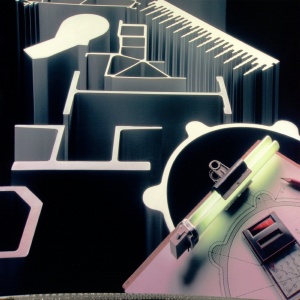At the "Nanotech 2009" in Tokyo, under the motto "The Future is Nano", Bayer MaterialScience AG will showcase a number of technical innovations based on its product Baytubes® (carbon nanotubes, CNTs). The spotlight will be on a number of new industrial applications featuring Baytubes® that have been developed in collaboration with some of Bayer MaterialScience's partners for the chemical, mechanical engineering, sports goods and electrical/electronics industries.
 Aluminum powder reinforced with Baytubes® can be extruded into a wide range of semi-finished products, such as profiles. The material can also be used to produce bolts, pipes and bars. All these semi-finished parts can subsequently be processed into end products.
Aluminum powder reinforced with Baytubes® can be extruded into a wide range of semi-finished products, such as profiles. The material can also be used to produce bolts, pipes and bars. All these semi-finished parts can subsequently be processed into end products.
"Based on the example of a new CNT-reinforced aluminum powder and rotor blades for wind turbines, we want to demonstrate in Tokyo the tremendous possibilities our carbon nanotubes open up, for example, in the field of lightweight construction," explained the head of the global Baytubes® business, Martin Schmid, in advance of the world's largest and most important trade fair for nanotechnology. "Weight reduction," he added, "results in much improved energy efficiency and a better CO2 balance".
Reinforced composite materials based on Baytubes® and aluminum powder offer entirely new design opportunities in lightweight construction. For example, CNT components have much higher mechanical strength, which, in turn, means they can be produced with much thinner walls and therefore weigh much less than their counterparts of non-reinforced aluminum. The tensile strength of this new class of materials is similar to that of steel, but it weighs only half as much because of the lower density. This qualifies it as an ideal lightweight alternative to steel in many demanding applications – for example in the manufacture of components for sports equipment or heavy-duty bolts and screws. With its high thermal conductivity it also has many potential applications in the energy, electrical and computer industries. "Cooling elements made of CNT-reinforced aluminum could dissipate the heat from electrical devices much more efficiently. This would make it possible, for example, to significantly increase the performance of processors and computers," says Schmid.
The length of the rotor blades in wind turbines is limited by their weight. Rotor blades manufactured from the new composite material based on carbon and glass fiber-reinforced epoxides with carbon nanotubes are 10 to 30 percent lighter and also much stronger than straight epoxy systems. The material's impact strength, for example, is 20 to 30 percent higher and its fatigue properties are 50 to 200 percent better. "Thanks to this outstanding set of properties, rotor blades made of this new composite material can be made longer, which significantly raises the output of wind power plants," noted Schmid.